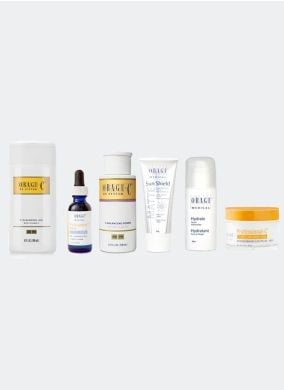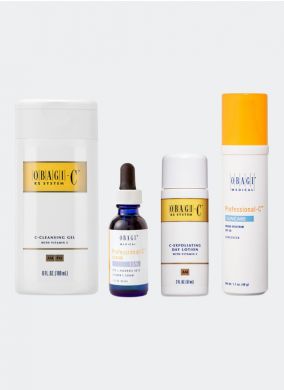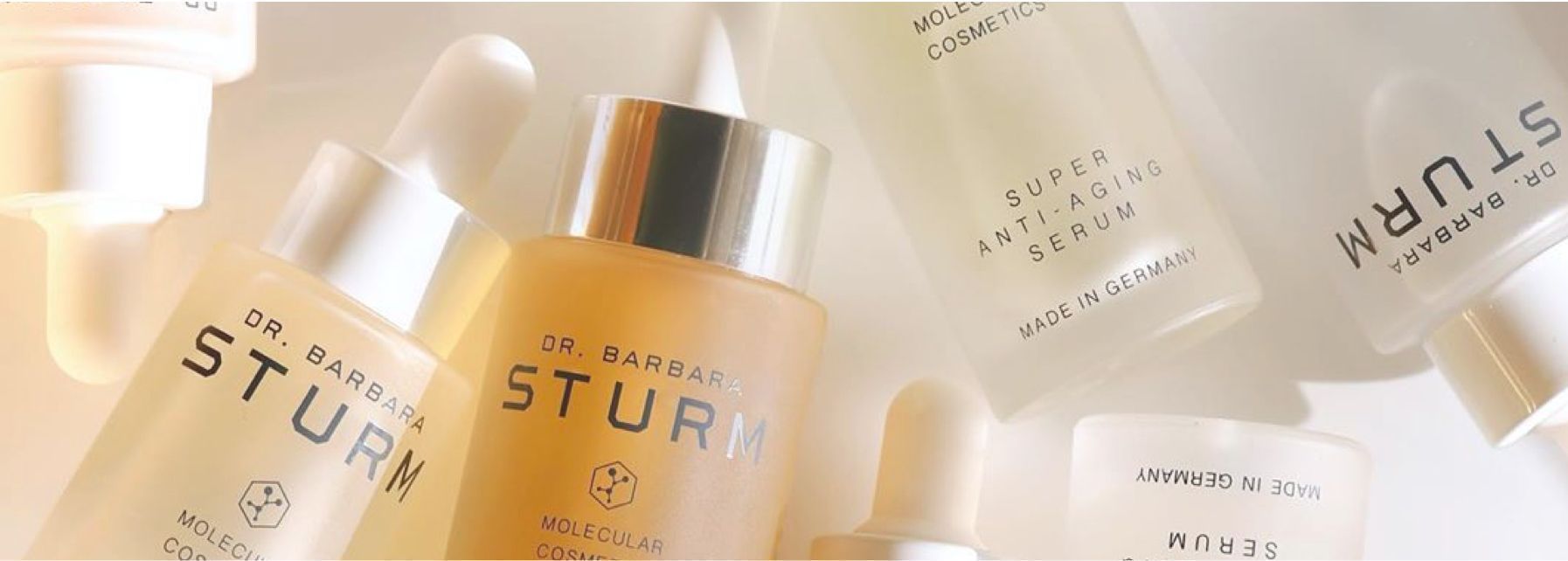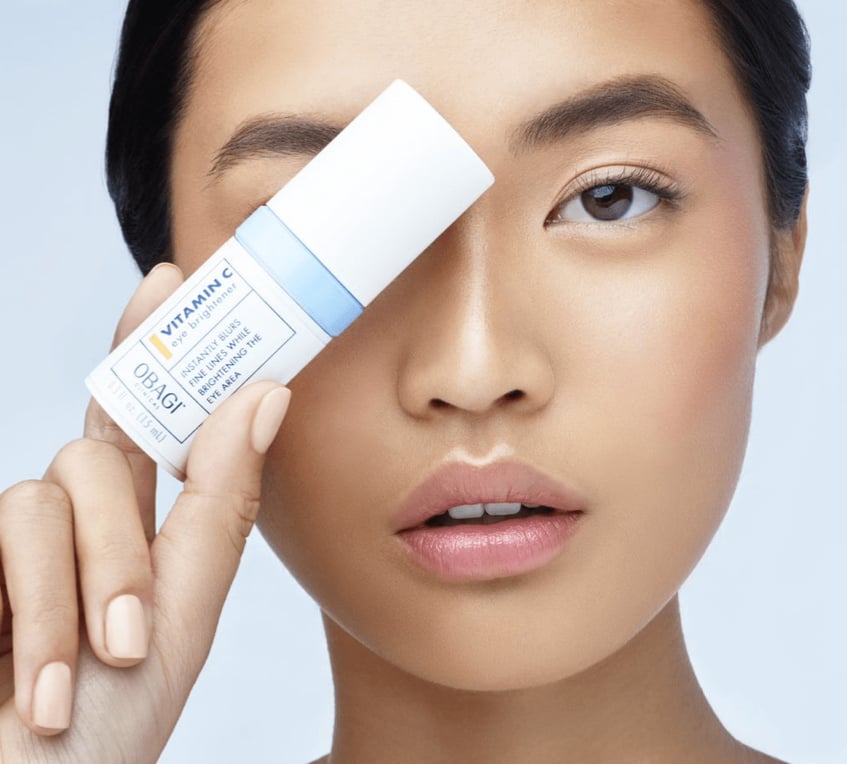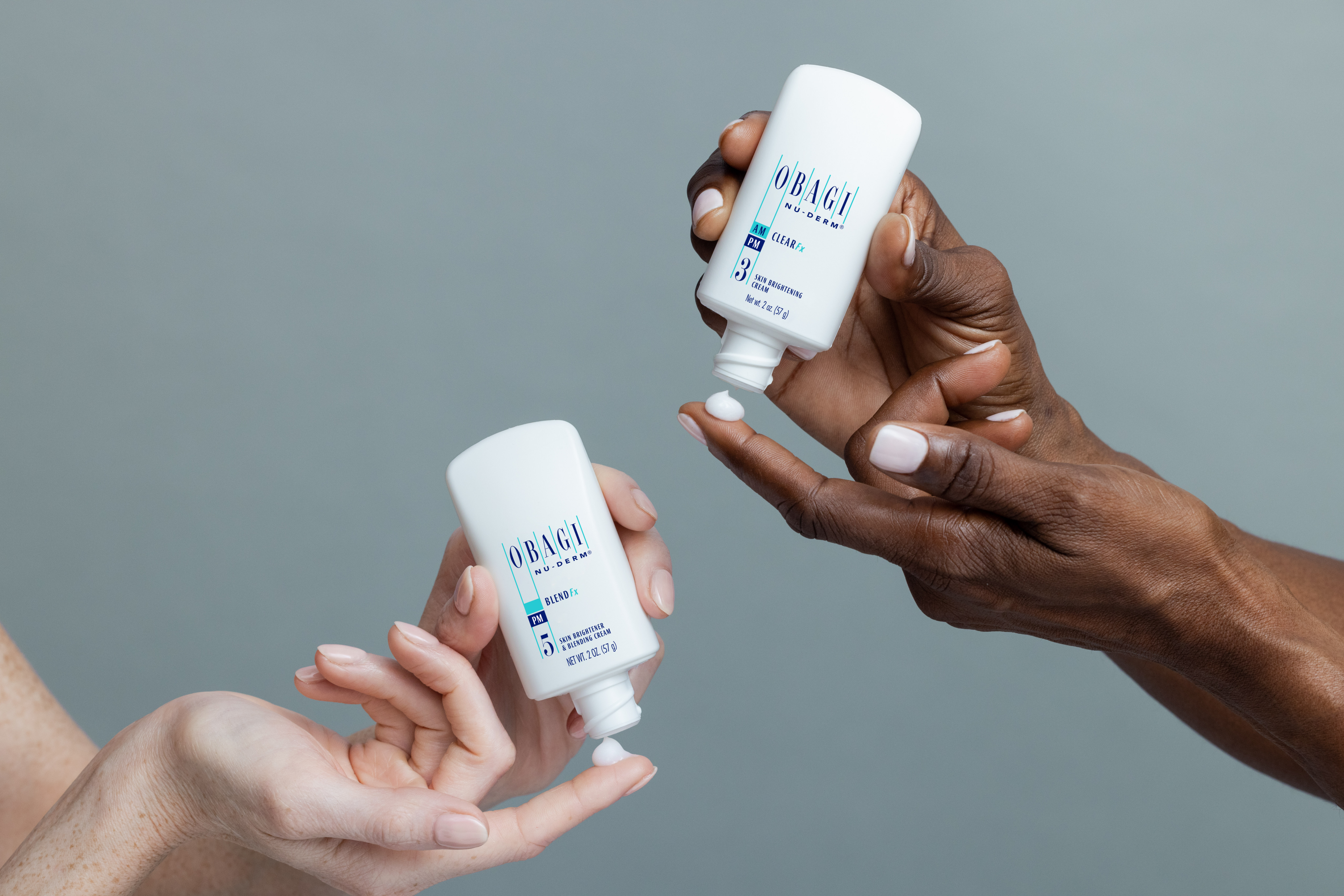What Is Hyperpigmentation?
Hyperpigmentation is identified as parts of the skin that appear darker than surrounding areas. It can occur in small patches or as larger areas on the face, arms, legs or anywhere on the body. It is predominantly caused by the overproduction of melanin, the pigment that gives your skin its colour and is a very common skin condition that can affect everyone, no matter the skin type.
Here are the different types of hyperpigmentation that can occur:
• Melasma – Most of the time, melasma is caused by hormonal changes or pregnancy. It occurs commonly on the stomach and face. It has a similar look to age spots, but usually appear in a much larger form
• Sunspots – Sunspots are caused by (you guessed it) excessive sun exposure and are commonly found on areas of the body which are typically more exposed to direct sunlight such as the face and arms. Sunspots are sometimes also referred to as ‘liver’ spots or solar lentigines
• Hyperpigmentation due to inflammation – This kind of hyperpigmentation is a result of damaged skin caused by acne, cuts or burns
Causes of hyperpigmentation can also be a result of consuming oral contraceptives that disrupt hormones, and certain drugs that increase a person’s sensitivity to sunlight. Other than that, prolonged sun exposure is generally the main cause for most people with hyperpigmentation.
What Is Hyperpigmentation?
Skin pigmentation is a natural occurrence. It is simply the colour of a person’s skin. It can be a great indicator of your skin’s health and how well you are looking after it, so consider any changes in your skin’s natural pigment as your skin’s way of asking you for a bit of love and attention.
90% of the factors that cause hyperpigmentation can be controlled. Number one is excessive sun exposure that simply changes the structure of your skin. The sun’s rays can speed up the activity of your cells or melanocytes. Melanocytes are what produce melanin, the pigment that gives your skin its colour. But due to the sun’s radiation, the pigment can intensely increase and thus hyperpigmentation occurs.
Lifestyle choices such as excessive skin tanning can also make these darkened skin patches more pronounced. If you’re one of those people who pick at your acne scars or even the tiniest of bug bites, you probably also have mild forms of hyperpigmentation without even knowing it.
How To Care For Your Skin When You Have Hyperpigmentation
Since hyperpigmentation can be caused by a range of factors, it’s best that you consult your dermatologist to discuss your treatment options.
Preventing these dark spots may not always be possible, but you can always protect your skin better by doing just a few simple things:
• Use a broad-spectrum sunscreen. Use at least SPF 30 and reapply when needed, especially when experiencing prolonged exposure to the sun
• Wear protective clothing. Using hats or clothing that can protect your skin from further sun exposure is also highly recommended, instead of just relying on your sunscreen to do all the hard work for you
• Avoid the sun when it’s at its strongest. As much as possible, avoid being in direct sunlight for long periods of time between 10:00 AM to 4:00 PM (e.g. if you’re on a beach or at a park, make sure you have some shade to protect you!)
Other than that, depending on how serious your hyperpigmentation is, you can also opt for topical prescriptions that can help diminish the appearance of dark spots. Certain actives and retinoids can also help in reducing dark pigmentations. In some cases, laser treatments or chemical peels can be recommended in order to reduce the appearance of dark patches of skin.
The Obagi CRX System
If you are suffering from common skin issues such as fine lines, uneven skin tone, hyperpigmentation, age spots and intolerance to aggressive anti-ageing regimens, you might want to give the Obagi CRX System a try.
This line promotes healthy, refreshed, and revitalised-looking skin that caters to pretty much every skin type including dry, normal, oily and even sensitive skin. Its purpose is to encourage skin rejuvenation from the inside out through prescription-strength skin brightening agents.
The Obagi CRX System includes the following key products:
1. Obagi CRX C-Cleansing Gel – This cleanses your skin, removing makeup, dirt and oil residue to prepare your skin for a deeper penetration of other CRX products. It contains Vitamin C, a powerful antioxidant that helps in the rejuvenation and brightening process of the skin. It also defends your skin against free radicals that further damage the skin and cause signs of ageing. This clinically proven formula also reaches deep into your pores without leaving your skin tight and dry. For a soothing effect, it also contains aloe barbadensis leaf juice that will leave your skin feeling completely hydrated.
2. Obagi CRX C-Balancing Toner- If you have oily skin, it is recommended that you choose the Obagi CRX C-Balancing toner as the second product in the system. It is ideal for brightening your skin whilst also helping to balance the natural pH levels of your skin. Added Vitamin C within the toner also promotes collagen synthesis which helps to minimise hyperpigmentation through neutralising free radicals. Best of all, unlike many toners, as this product contains soothing ingredients, it won’t cause redness or tightness after use and instead leave you with a fresh and balanced complexion.
3. Obagi C-Exfoliating Day Lotion- If you have dry skin, the Obagi C-Exfoliating Day Lotion is the recommended third step in the system. It aims in reducing the visible signs of ageing with the use of hyaluronic acid which works to increase water retention. It leaves skin feeling well-moisturised and revitalised whilst also removing dead surface skin cells and promoting faster cell turnover.
How To Properly Use The Obagi CRX System
• A skin test should be undertaken on an unbroken patch of skin before proceeding to use regularly
• A thin application of the product should be applied only to the affected area
• Use twice daily or as prescribed by a dermatologist
• Sun exposure should be limited during the process of the treatment. It is highly recommended that you use sunscreen for added protection
• Avoid contact with eyes, nose, mouth or lips
• Follow the product frequency instructions for best results
How The Obagi CRX System Works
You can be on your way to softer, smoother, radiant and more even looking skin with the Obagi CRX System. Clinical data shows the the Obagi CRX System delivers more L-ascorbic acid into the skin and promotes lasting results that are more effective than other leading Vitamin C skin care products. It also penetrates deeply into the skin to provide greater daily protection and offers the antioxidant benefits of Vitamin C for maximum rejuvenating effects.
As early as 6 weeks, regular users claim that the products within the system restored the balance and clarity of their skin. Others even said that it was the best investment that they had ever made when it came to skincare. As for anti-ageing, it is no doubt effective with users also stating that it made them feel as though they looked younger than their actual age.
Keep in mind however, that products in this system are not recommended to be used by pregnant and breastfeeding mothers. Treatment should be limited to small areas of the body as some areas of the skin are more sensitive than others. The use of sunscreen during the treatment is also strongly advised as certain ingredients can cause sensitivity to the sun.
Consult your trusted dermatologist before trying out any of Obagi’s CRX System products for a better understanding of what your skin actually needs. Aside from the products listed above, most of Obagi’s CRX System line is available only through prescription and as a result, is not recommended for use without professional guidance.
Overall, The Obagi CRX System has transformed lives due to its proven effectivity when it comes to trouble hyperpigmented skin. However, taking care of your skin during and after the process of using Obagi products should also be of high priority. A few hours of prolonged sun exposure can easily undo months of treatment. When it comes to hyperpigmentation, topical treatments can be miracle workers. But at the end of the day, it all boils down to prevention and taking care of your skin so that any products used can have the best chance of success in treating your skin.


